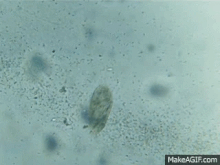Biology, Answering the Big Questions of Life/CellLab-TG


Cells and Microscope lab
[edit | edit source]I am hesitant even to write this lab, because it is so dependent on the materials available to the instructor. What should happen in this laboratory is the instructor should show cells to the students. One of the best places to get cells is any stagnant water, stream, or pond nearby which is likely to have microscopic protists in it.
Learn to identify the parts of the microscope and observe cells from as many of the kingdoms of life as you can.
Some easy cells to see include:
Human cheek cells
Onion cells
Algae cells ( if the temperature is favorable).
Things to point out to students.
- Bacterial cells are much smaller than eukaryotic cells, and size should be a clue used in kingdom identification.
- Different cells have different appearances due to their functions.
- Cells are three dimensional and you may need to focus up and down to really see the structure.
Students may be hesitant to draw, but insist that they draw what they see. Look out to make sure that the students do not try to copy an image from the textbook instead. The point is that they make their own observations without second guessing or fudging data. Get the students to label as much as they can, and to record the proper magnification.